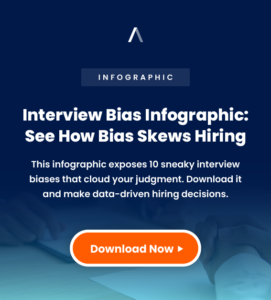Elevating the Candidate Experience: From Application to Offer and Beyond
Every candidate wants to be treated like they are special. Even though we are currently in an “employer’s market” we aren’t looking for bodies to fill the space. We’re looking for gifted, talented employees that make a difference. There’s competition – so you need to elevate your candidate experience wherever possible.
The candidate experience starts from the moment someone spots your job posting online. It continues, truthfully, through retirement. Poaching, retention issues, turnover, and succession all depend on candidate experience. Studies show the first 120 days of employment matter most when measuring retention.
The candidate experience plays a crucial role in how someone perceives your company. But how can you make it better for candidates when you haven’t been through the process yourself?
In this post, we’ll explore strategies to elevate the candidate experience. It isn’t easy, but with small steps, almost any organization can do it.
The Importance of the Candidate Experience
The candidate experience holds immense significance for employers. It goes beyond filling a position. Those days are over, particularly for the new generations. Now, it’s about building relationships with potential employees right from the start.
A positive candidate experience does a lot! It:
- Enhances your brand
- Attracts top talent
- Sets you apart from competitors.
Candidates with a seamless hiring process are more likely to become engaged employees. They’re more likely to make a positive impact on your workforce AND stay on as employees. Think of candidate experience as part of your hiring, retention, and engagement strategies.
They feel valued and respected, which fosters loyalty and commitment.
What about a negative candidate experience?
On the flip side, a negative experience can deter candidates. It could stop them from applying at all, if you have a poorly written job description. It could cause them to back out in the middle of interviews (or even ghost). Or, it could ruin their onboarding experience and cause them to leave. If they stay, a bad candidate experience could stay in their minds and impact performance. At its worst, a bad candidate experience can even damage your company’s reputation!
Investing in the candidate experience benefits individual applicants and contributes to long-term success. Not investing causes a trickle down that leads to retention and engagement issues.
The Application Process: Strategies for a Smooth and User-Friendly Experience
When it comes to the application process, simplicity and efficiency are key. For hourly hiring, people apply to many jobs at once. Lengthy, overthought application processes are often abandoned in the middle. For salary roles or those that need top talent, you’ll likely have the same problem.
So what can you do?
- Start by streamlining your application form! Ask for essential information that you need to make a decision on who to interview. Remember that you have opportunity to get more information when you need it. For example, don’t ask for information you’d find on a resume and then
- Consider implementing a mobile-friendly application platform. Most people don’t apply from desktops or even laptops anymore. They’re sitting on their couches, watching Bridgerton, and applying then. How can you do this? Make sure your website is user-friendly and easy to navigate. Provide clear instructions on applying, including any specific requirements or documents needed. Remember that transparency builds trust and shows respect for the candidate.
- Offer real-time support in case applicants have questions or encounter issues. Things can’t always go 100% well. When they do, a responsive and helpful approach can make all the difference.
By optimizing the application process, you’ll enhance candidate experience from their first interaction.
Interviewing techniques to enhance candidate experience
Interviewing is nerve-wracking for candidates AND for those doing the interviewing. This step in the recruitment process is where candidates showcase their skills. They have the task of making you see their potential within the role. A good candidate will do a lot of prep work.
You have to do the same.
If you haven’t been, now is the time to start. Here’s how we’d do it:
- Create a welcoming atmosphere from the moment they arrive.
- Greet them, offer refreshments, and make sure they feel comfortable.
- Do your research before they arrive. They’ll know if you’re reading their application on the spot.
- During the interview itself, ask thoughtful questions. Focus on both their qualifications and personality. This shows that you are interested in getting to know them beyond their resume. It’s a good way of showing you care about culture rather than just saying it.
- Maintain good eye contact and active listening throughout the conversation.
- Provide clear communication about the next steps in the hiring process.
- Be transparent about timelines and follow-ups so candidates know what to expect post-interview.
- Offer feedback regardless of whether you hire them! This can leave a positive impression on candidates.
Creating a positive interviewing experience goes a long way to build your reputation. By focusing on that, it’ll be easier to hire for future opportunities.
Making an offer: how to make it personal and memorable
So you’ve found your ideal candidate, interviewed them, got sign off…now what? You have to make an offer and you have to make it a good offer.
Personalization is key here. Tailor the offer to the candidate’s preferences and needs. If you can remember something that they mentioned in the interview, say it. If they had a specific concern you’re going to address in the offer, lead with that. Another way to do this is by highlighting specific reasons why that candidate was chosen.
Provide clear details about compensation, benefits, and growth opportunities. Make them excited about this next step! Speaks to what motivates the candidate, and you’ll make the offer more enticing. Remember to also demonstrate your commitment to their success within your organization.
Don’t forget: making an offer isn’t just a formality—it’s an opportunity to make a good impression.
Onboarding and beyond: retaining candidates through a positive experience
Starting a new job can be both exciting and nerve-wracking for candidates. As they transition to a team member, the onboarding process is crucial in setting the tone. To retain candidates, companies should provide clear expectations, thorough training and ongoing support. This can help new hires feel confident and empowered in their roles.
How can you do this? It isn’t one single thing, but rather a cumulative feeling they get. Try things like:
- Personalized welcome messages from team members.
- Building relationships early on through mentorships.
- Regular check-ins with managers or mentors. We suggest at least weekly up until 90 days.
- Open communication channels. Giving them a platform where they can go if they are confused or concerned about something.
- Encouraging feedback from new hires can provide valuable insights for continuous improvement. By actively listening, organizations demonstrate that they prioritize employee satisfaction and growth.
These are just a few of the things you can do. There are other ways to keep them happy! Employee engagement, continuous feedback, culture, and more will keep them at your organization.
Measuring success: using feedback and data to improve the candidate experience
There’s one thing we haven’t really talked about yet, and that is data.
Data is a tool to measure how candidates perceive their journey with your company. Have candidates share their thoughts on what worked and what didn’t. You can do this through surveys, interviews, or anonymous feedback. Try to assign some kind of scoring system so that you get numerical data. Of course, quotes and open, subjective feedback is helpful too.
What can you measure for candidate experience?
Data analytics play a crucial role in quantifying the candidate experience. What can you measure?
- Time to fill
- Acceptance rates
- Retention rates
- Performance
- Succession
- Impact
These are just a few options! This data helps you to identify trends and make data-driven decisions to enhance candidate experience. Continuous monitoring of feedback and data helps in adapting strategies. It allows you to address any issues that may arise during the hiring process.
This proactive approach demonstrates your commitment to improving the candidate experience continuously. Incorporating feedback loops into your recruitment strategy fosters transparency and trust with candidates. It shows that their opinions are valued and considered seriously by your organization.
Last tip: Leveraging both qualitative feedback and quantitative data ensures a holistic approach toward refining the candidate experience for future applicants.
Rolling out the Candidate Red Carpet
Prioritizing the candidate experience from application to offer and beyond is crucial. By focusing on creating a seamless application process, conducting interviews that make candidates feel valued, personalizing offers, providing a positive onboarding experience, and gathering feedback to continuously improve, you can set your organization apart as an employer of choice.
Remember, every interaction with a candidate shapes their perception of your company – make it a memorable one!
Stuck on how you can make the candidate experience better? Mitratech’s HR suite has software that helps streamline hiring, improve onboarding, and ensure success at your organization. Click here to schedule a demo of our HR software.
Got the resources to meet return-to-work challenges?
Mitratech offers the right solutions and support to help you pivot to meet post-pandemic demands.




